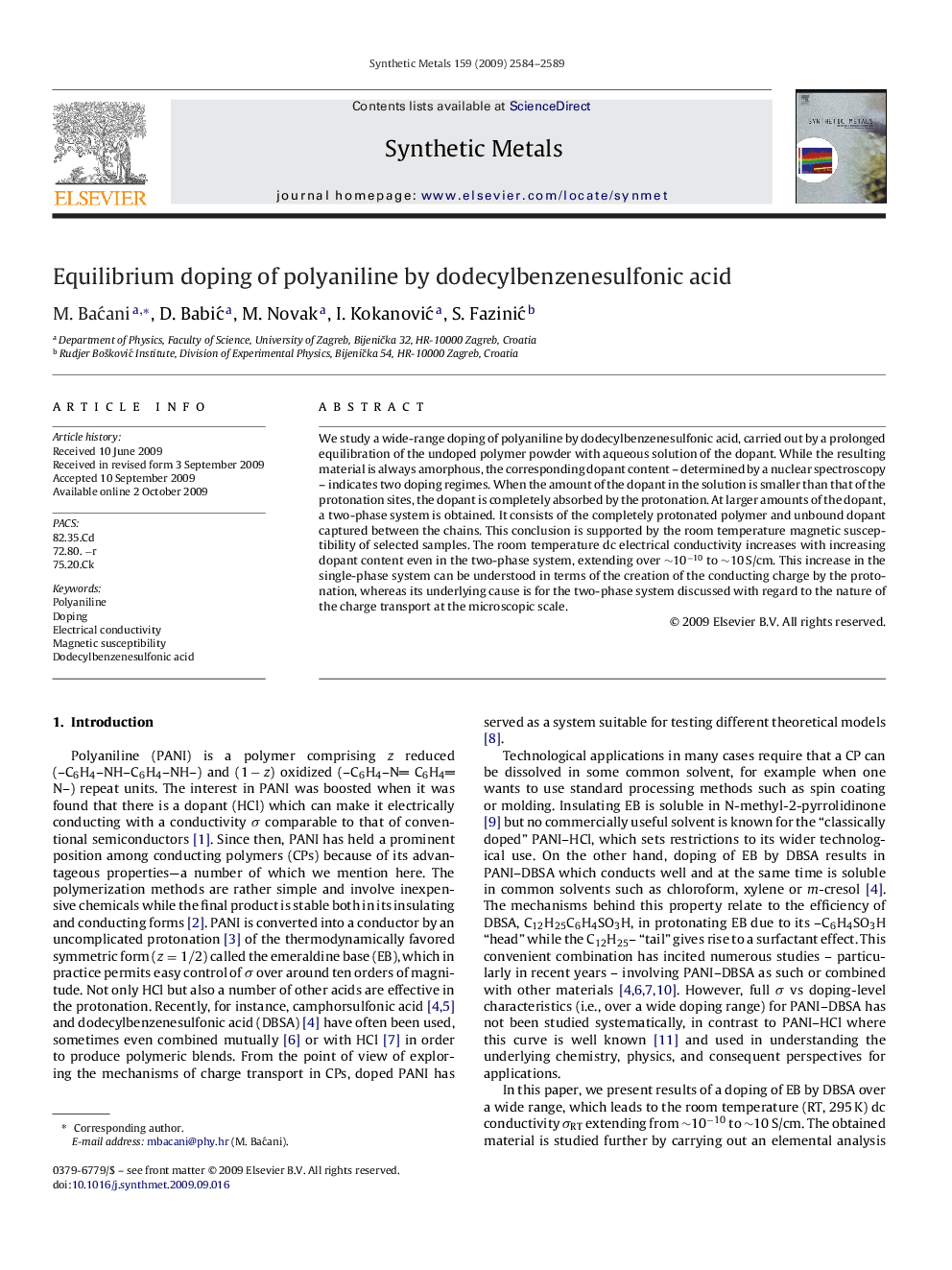| Article ID | Journal | Published Year | Pages | File Type |
|---|---|---|---|---|
| 1442774 | Synthetic Metals | 2009 | 6 Pages |
We study a wide-range doping of polyaniline by dodecylbenzenesulfonic acid, carried out by a prolonged equilibration of the undoped polymer powder with aqueous solution of the dopant. While the resulting material is always amorphous, the corresponding dopant content – determined by a nuclear spectroscopy – indicates two doping regimes. When the amount of the dopant in the solution is smaller than that of the protonation sites, the dopant is completely absorbed by the protonation. At larger amounts of the dopant, a two-phase system is obtained. It consists of the completely protonated polymer and unbound dopant captured between the chains. This conclusion is supported by the room temperature magnetic susceptibility of selected samples. The room temperature dc electrical conductivity increases with increasing dopant content even in the two-phase system, extending over ∼10−10∼10−10 to ∼10 S/cm. This increase in the single-phase system can be understood in terms of the creation of the conducting charge by the protonation, whereas its underlying cause is for the two-phase system discussed with regard to the nature of the charge transport at the microscopic scale.
